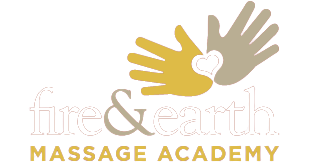I've Heard of Tennis Elbow. What Is It?
Posted on 24th October 2023
Tennis elbow; the term evokes images of tennis players clutching their arms in pain after an intense match, right? But here’s the surprise: you don’t have to be a tennis enthusiast to experience this discomfort. Tennis elbow, or lateral epicondylitis, is a condition that affects more people than you might think, regardless of their athletic pursuits.
The basics: what Is tennis elbow?
At its core, tennis elbow is a form of tendinitis, which means it involves inflammation of a tendon. Specifically, tennis elbow causes pain and tenderness in the forearm, particularly on the outer side, just below the elbow. The culprit? Overuse or chronic injury resulting from repetitive movements like gripping, twisting, or lifting. These activities overload the muscles in the forearm, leading to inflammation of the tendons and subsequent discomfort and pain. Contrary to popular belief, tennis elbow is not an exclusive woe of tennis players. It's a common condition that affects a diverse range of people.
Why the tennis connection?
So, why is it called tennis elbow? Well, tennis players are often plagued by this ailment due to their constant gripping of the racket. The repetitive motion of their forearms, especially during serves and backhand shots, can strain the tendons, leading to inflammation and pain. However, tennis players aren’t the only ones at risk. Anyone engaged in activities that demand repetitive gripping and twisting is susceptible, including individuals working with computers.
Who is at risk of getting tennis elbow?
Gardeners tending to their plants, DIY enthusiasts wielding tools, office workers glued to their mouse, typists slaving away at keyboards, tradespeople like plumbers and carpenters using hand tools, and even musicians passionately playing instruments – they all face the risk of developing tennis elbow. It’s an equal-opportunity affliction that can affect anyone engaged in repetitive tasks.
Identifying the symptoms
How do you recognise tennis elbow? The pain typically manifests on the outside of your upper forearm, just below the elbow joint. It might radiate down your forearm toward your wrist, causing discomfort during simple everyday activities. Lifting or bending your arm, writing, gripping small objects, twisting your forearm (like turning a door handle or opening a jar), or fully extending your arm can all trigger the pain. The severity of the discomfort ranges from mild irritation to debilitating agony, depending on the duration of the condition and your ability to rest from the triggering activities.
How do you treat tennis elbow?
The good news is that tennis elbow is treatable. A combination of approaches, including sports massage, taping, targeted exercises, and rest from the activities causing pain, can significantly alleviate the discomfort. Sports massage, in particular, plays a vital role in relaxing the affected muscles, allowing them to heal.
At our clinics, we've found success in a method we call the “3 Treatment Rule.” This approach involves three sessions held closely together, ideally on a weekly or less frequent basis. These sessions, combined with a home exercise program, enable the muscles to relax and prevent them from reverting to a state of chronic tension that exacerbates the pain.
Conclusion
Tennis elbow might sound exclusive to sports enthusiasts, but it’s a condition that affects a wide array of individuals engaged in various repetitive activities. The key lies in recognising the symptoms and seeking timely treatment.
Whether you’re a tennis player, a computer whizz, a musician, or someone who enjoys DIY projects, being aware of the risks and taking preventive measures can go a long way in safeguarding your arms from this common ailment. Remember, understanding the condition is the first step toward a pain-free life, regardless of your daily pursuits.
Interested in becoming a sports massage therapist and helping people suffering from tennis elbow and other conditions? Find out more about our introduction days and courses here! If you’d like more information, you can also get in touch with our friendly team who will be happy to help.
Share this post:

